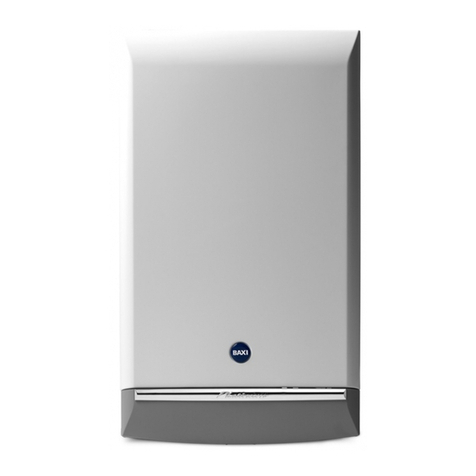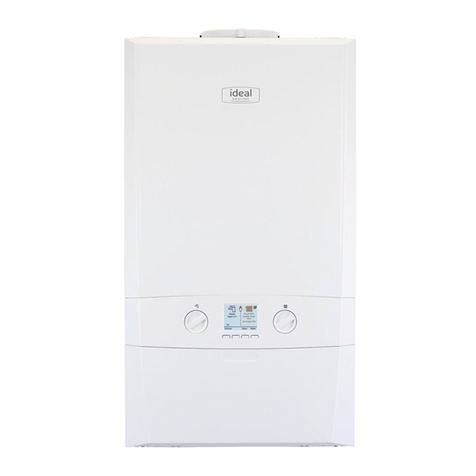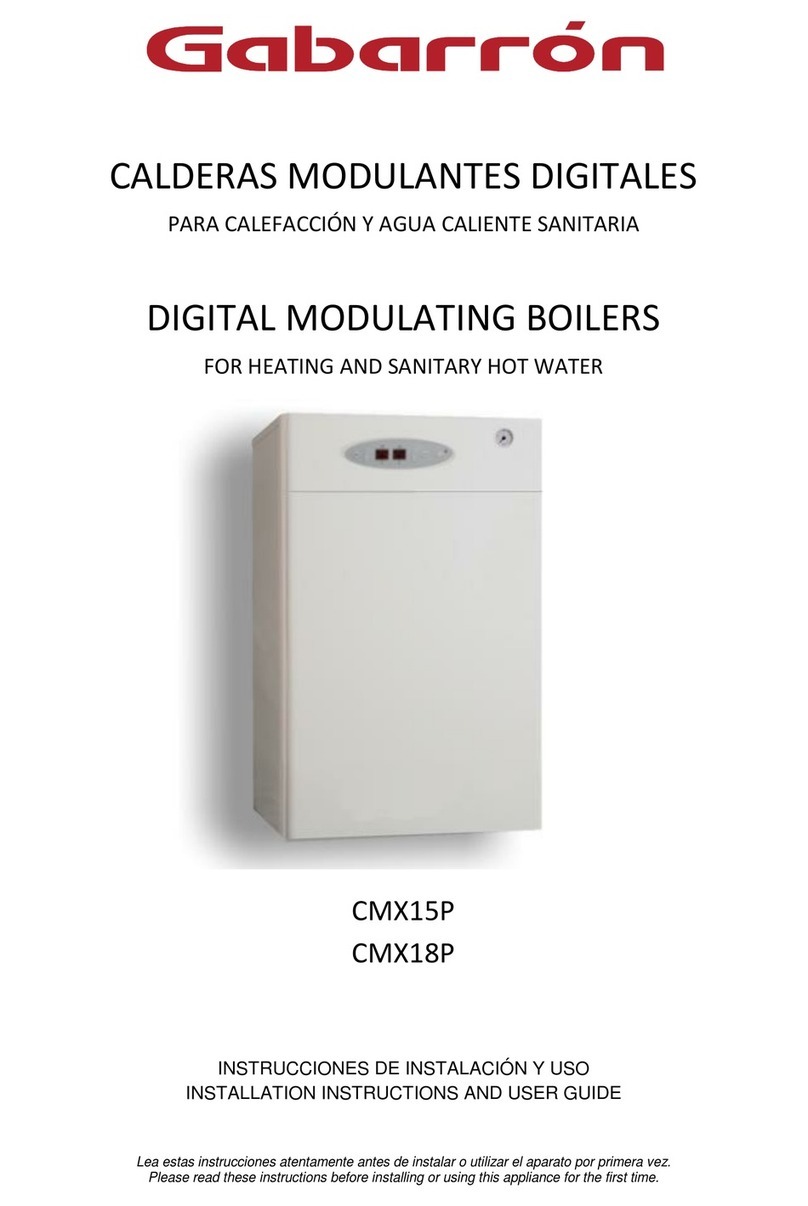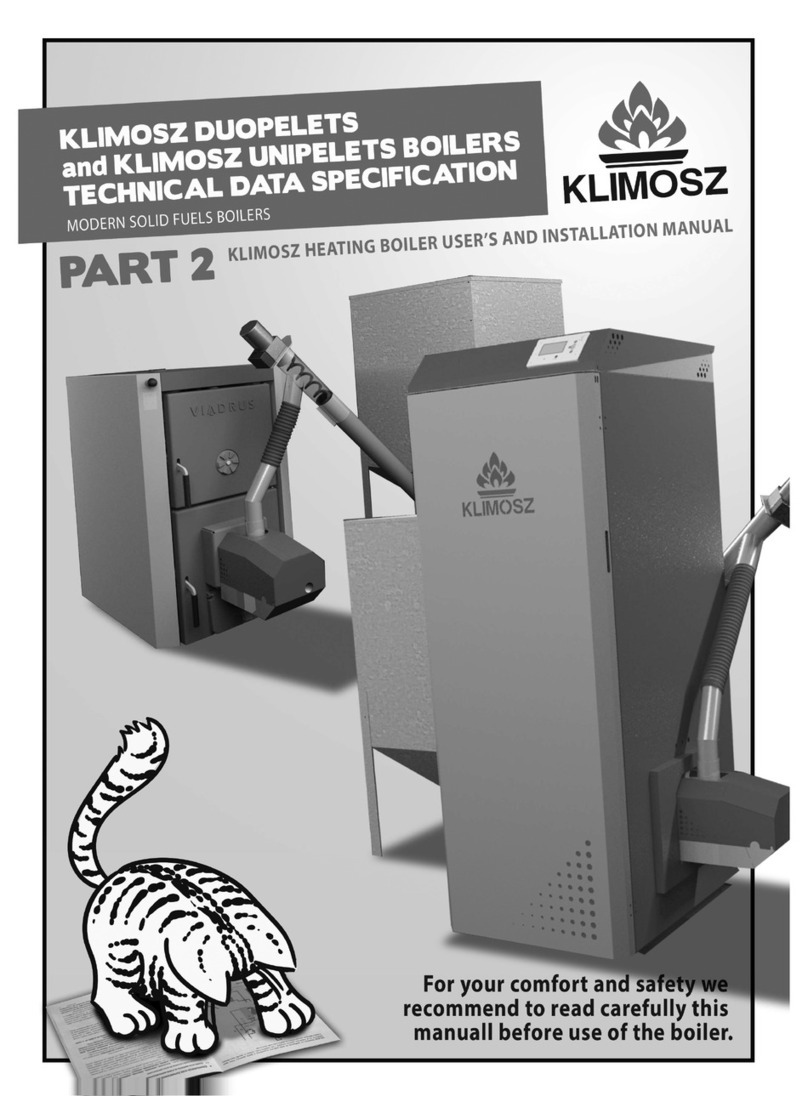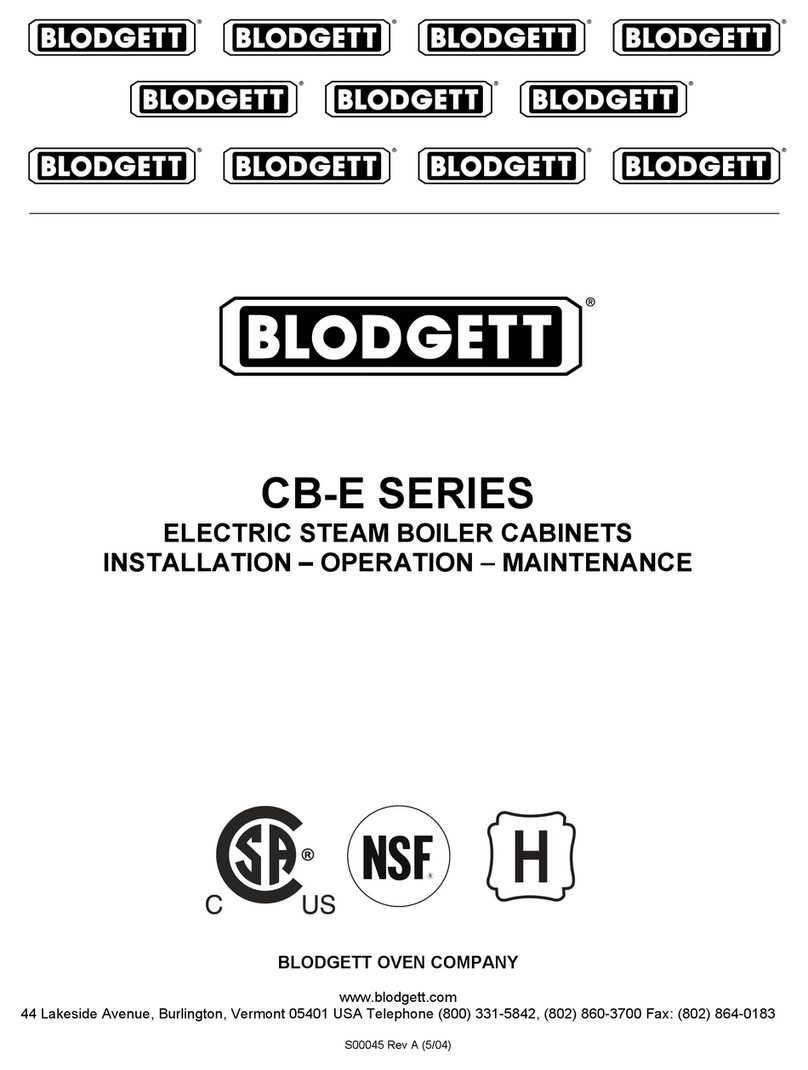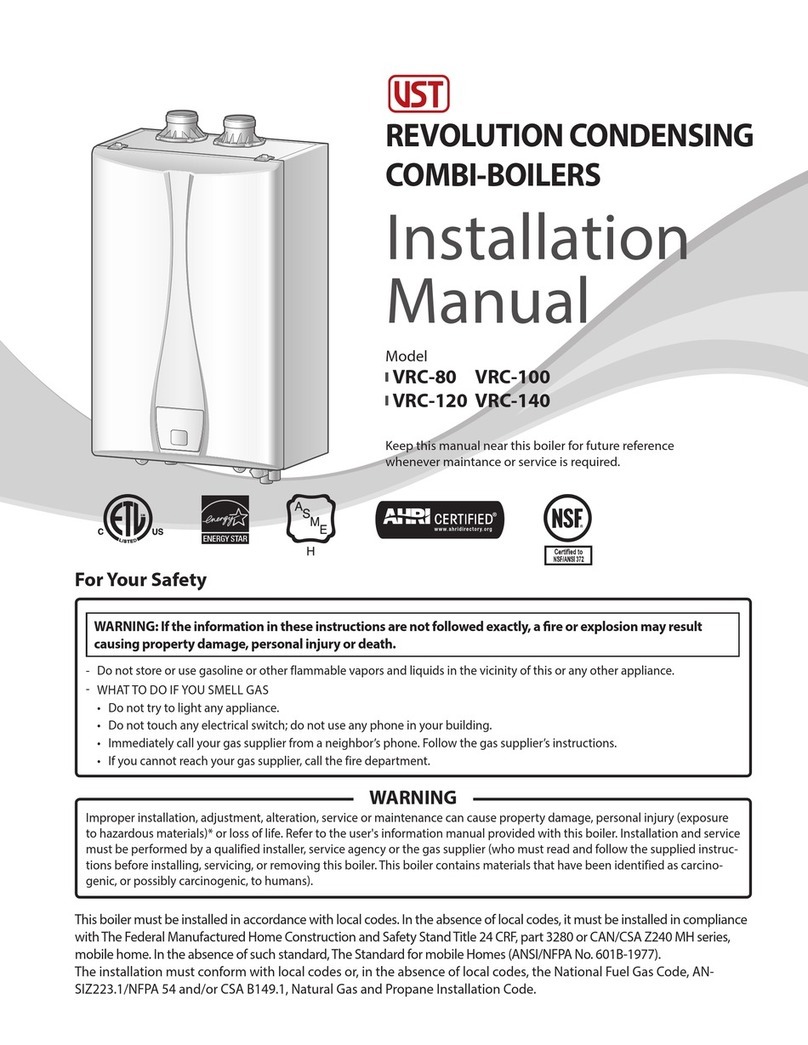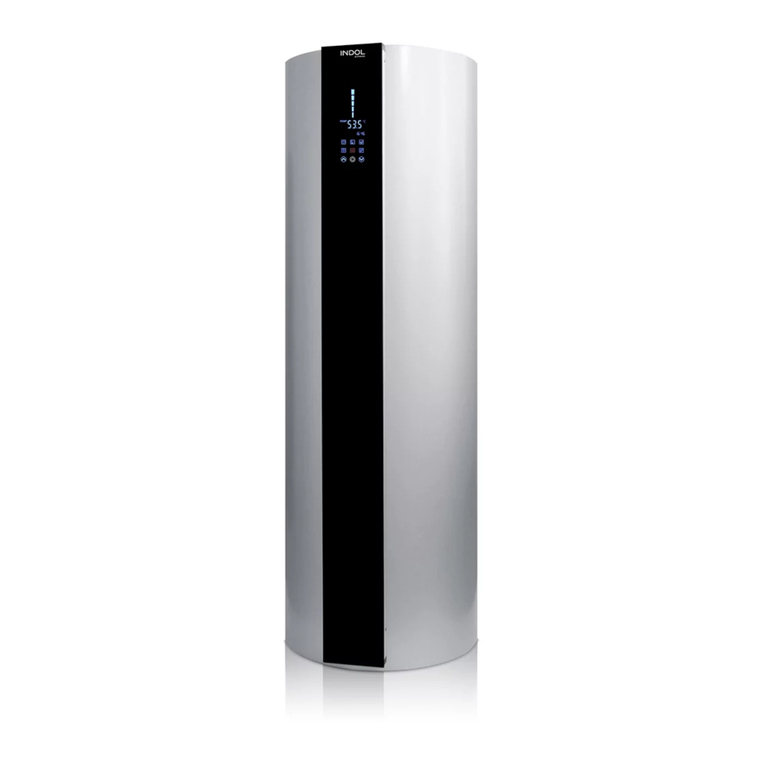➠ Expansion vessel and 3 bar rated safety relief
&DSDFLW\RIWKHH[SDQVLRQYHVVHOVKRXOGEHGHWHUPLQHGDFFRUGLQJWRWKHWRWDOYROXPHRIWKHKHDWLQJFLUFXLW
+HUHXQGHUWHFKQLFDOLQIRUPDWLRQIRUDOLWHUFDSDFLW\H[SDQVLRQYHVVHO (1,5 bar inflated) and a 3 bar rated safety relief.
Depending on the static height of the circuit, it might be necessary to adjust the pressure inside the expansion vessel.
(1) : Deflate and check the pressure of the vessel if necessary.
(2) : Rating 11 litres per kW installed heating output using steel radiators
13 litres per kW installed heating output using cast-iron radiators
17 litres per kW installed heating output using follr-heating
(3) : For installations with a greater water volume, multiplicate this volume with the expansion factor corresponding with the inflated pressure to calculate the minimum
capacity of the required expansion vessel. If necessary connect the 8 litres expansion vessel supplied with the boiler to an additional vessel.
2.2 - Installation notice
➠ Disconnector NF
Depending on local existing regulation a disconnector
might be needed to prevent the heating water flowing
back into the domestic water circuit. In this case this
disconnector will be connected to sewage. Refer to local
existing regulation for this matter.
➠ Cross-sections, shape, drainage of the heating
circuit
The flow must be enough to have a temperature
differential between outflow and backflow below
20°C. If the installation is set with thermostatic cocks,
measurement of this differential must be done all cocks
opened.
Actual output needed will be the key to determine the
flow rate of the heating circuit, and then, the length of
the circuit.
Adjust the pump speed to the characteristics of the
heating circuit using the flow-rate/pressure diagrams
supplied with this booklet.
To make sure bleeding will be permanently achieved,
install automatic air bleeders on any high point of the
installation and manual bleeders on any radiators.
➠ Sludge decanter
Forsee a sludge decanter at lowest point of the backflow
heating circuit. Of enough size, this decanter will be
equipped with a drain to collect oxydes, particles and
calamines that might unleash from the inside of the tubing
during the operation of the boiler.
➠ Safety relief drain
Connections and pipes must be made of corrosion
resistant materials.
➠ Hydraulic circuit processing (rincing)
Before connecting the boiler the heating circuit must be
cleaned with an appropriated product. This to supress
any trace of welding, soldering, sealent, greace, sludges,
metallic particles, etc...into radiators, floor heating, etc....
This to avoid any damage to the boiler.
➠ Filling water
Various materials are used into the tubing of an heating
circuit. Galvanitic phenomenon might then create
corrosion into both new or old installations.
To avoid such problems the filling water must be of high
quality :
8,5 £PH (acidity) £9,5
Chlorides rate £60mg / litre
Conductivity <1000 mS / cm
5 £TH (total hardness) £15
° in french scale (C degree)
After a correct cleaning of the circuit we recommend to
add into the filling water a corrosion inhibitor, according
to local existing regulation and the rate and procedures
given by the manufacturer.
Frequent refill or uncontrolled refill is prohibited (i.e
automatic refill) to avoid any risk of corrosion or
tartrating.
WKHKHDWLQJFLUFXLWPXVWEHFOHDQHGFDUHIXOO\
ROGFLUFXLWXVHDVSHFLILFSURGXFWDV6HQWLQHO;
QHZFLUFXLWXVHDVSHFLILFSURGXFWDV6HQWLQHO;
7KHQDVSHFLILFSURGXFWDV6HQWLQHQ;IRUSURWHFWLQJWKHFLUFXLWDJDLQVWFRUURVLRQ;IRUDIURVWSURWHFWLRQ
121&203/,$1&(:,7+7+($%29(5(48,5(0(176 &$1&(//$7,212)7+(*8$5$17((
Static height of the installation (m) 2,5 5 7,5 10 12,5 15
Pre-inflated pressure (bar) (1) 0,25 0,5 0,75 1 1,25 1,5
Maximum available water volume for a 8 litres
expansion vessel (2) 152 138 125 111 97 83
Expansion factor (3) 0,05 0,058 0,064 0,072 0,083 0,096






















